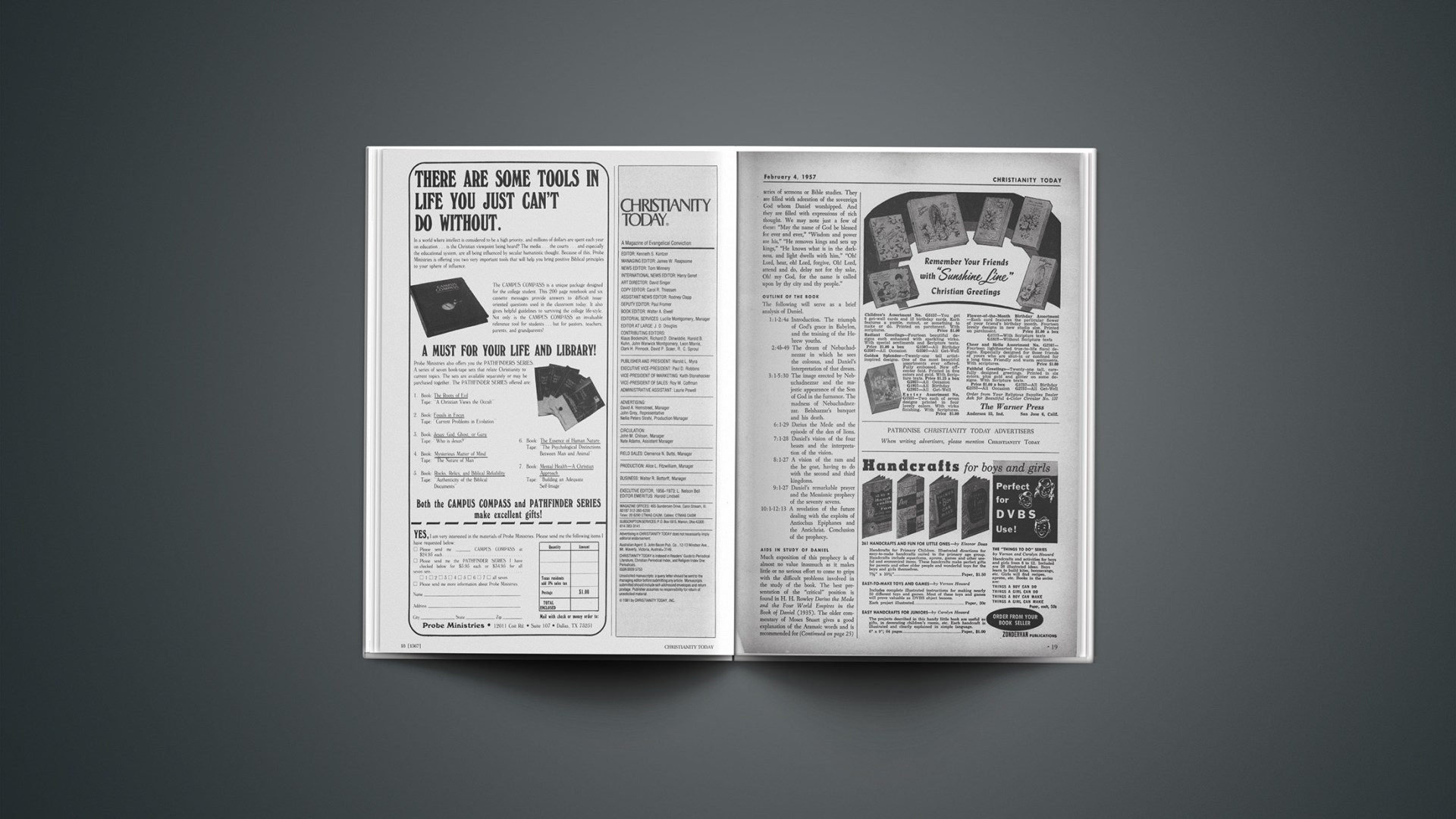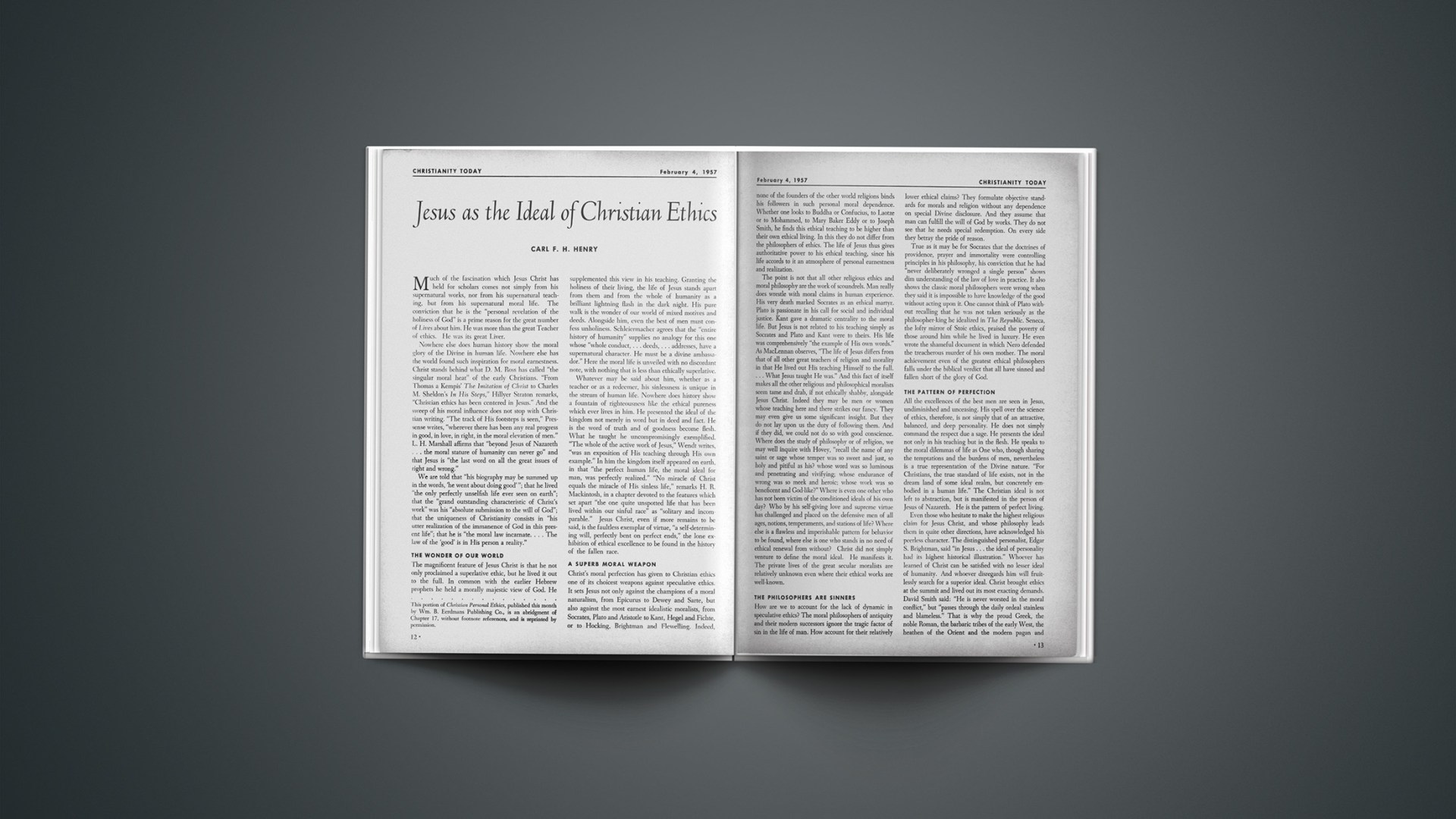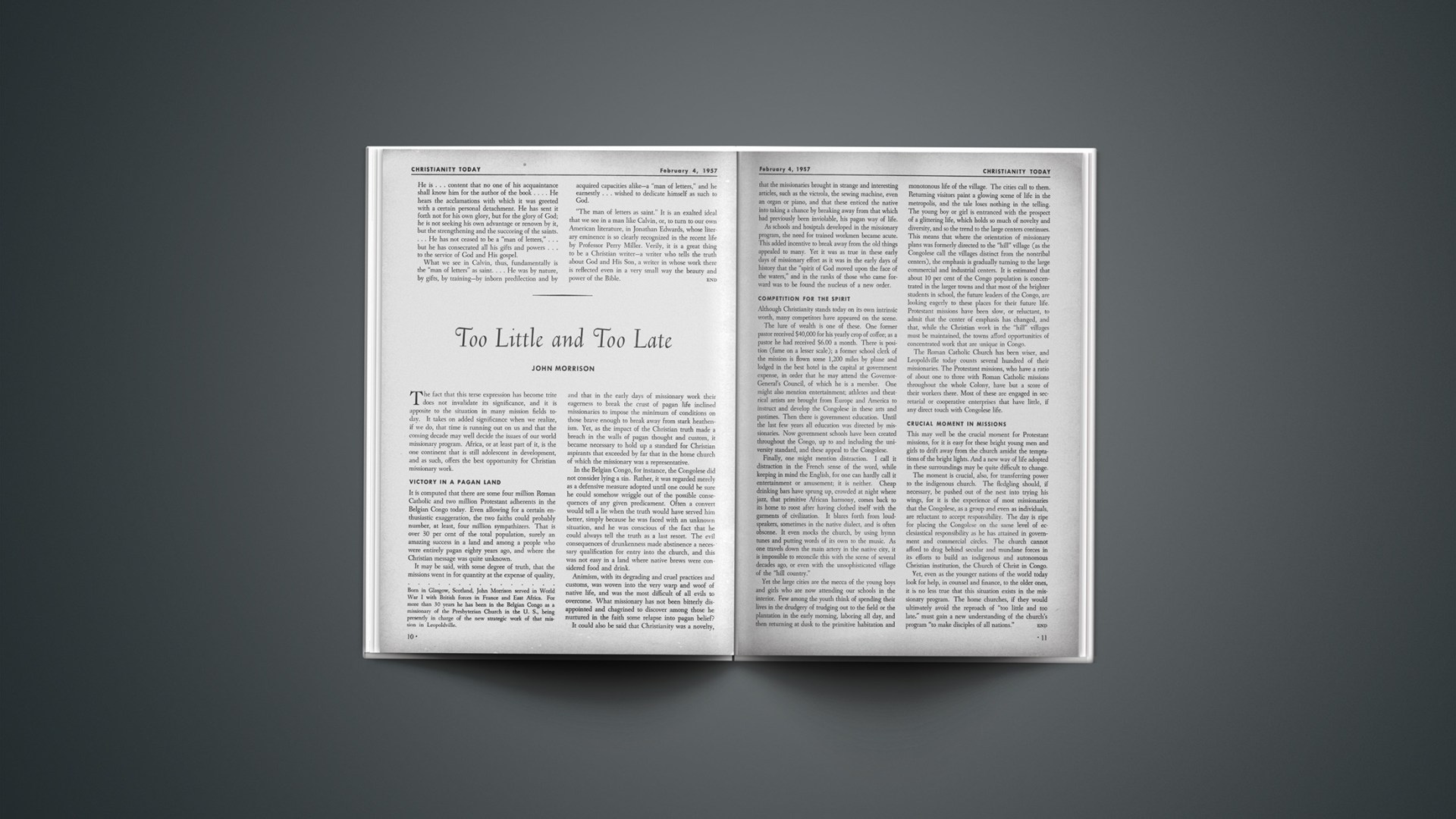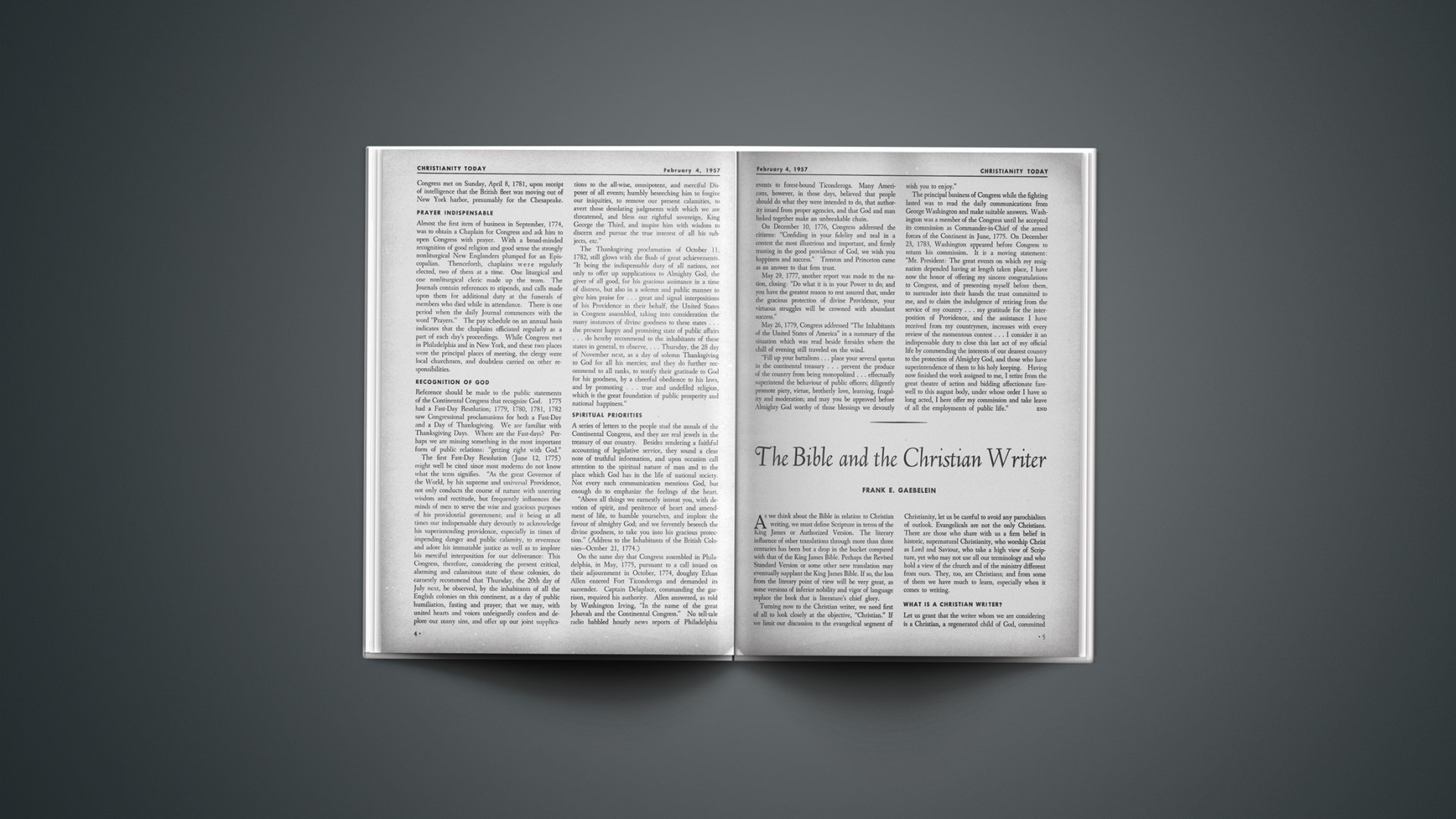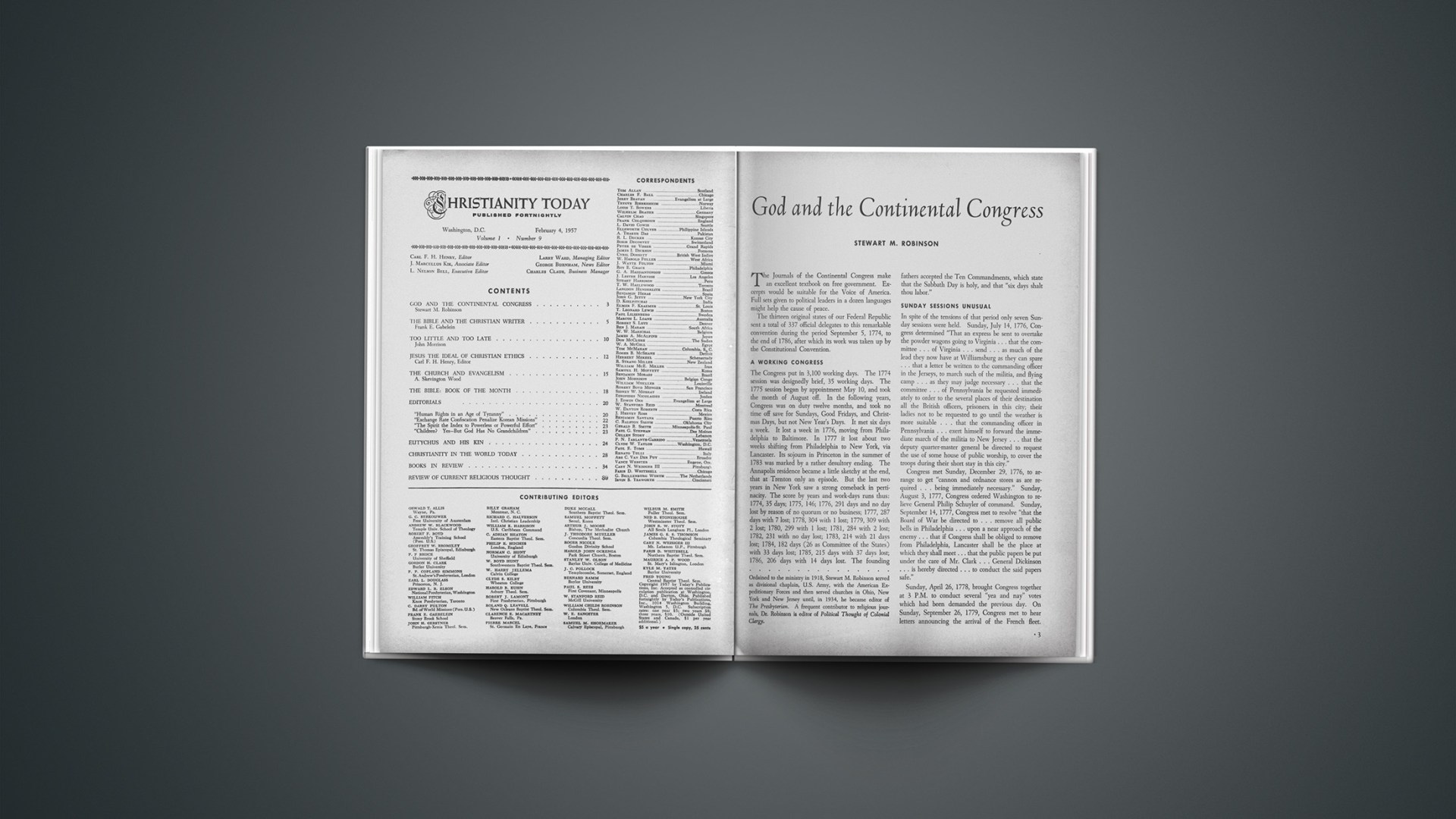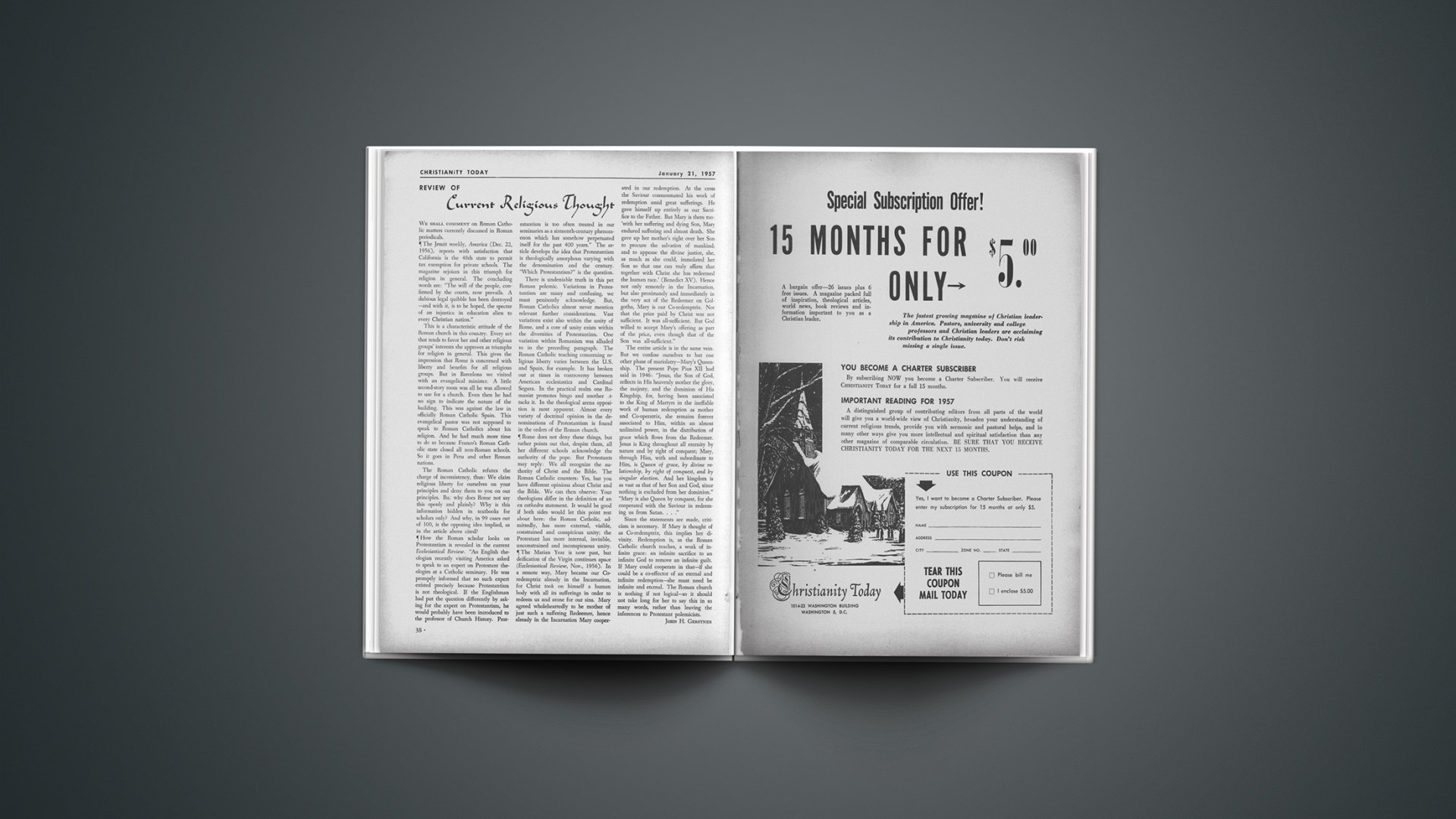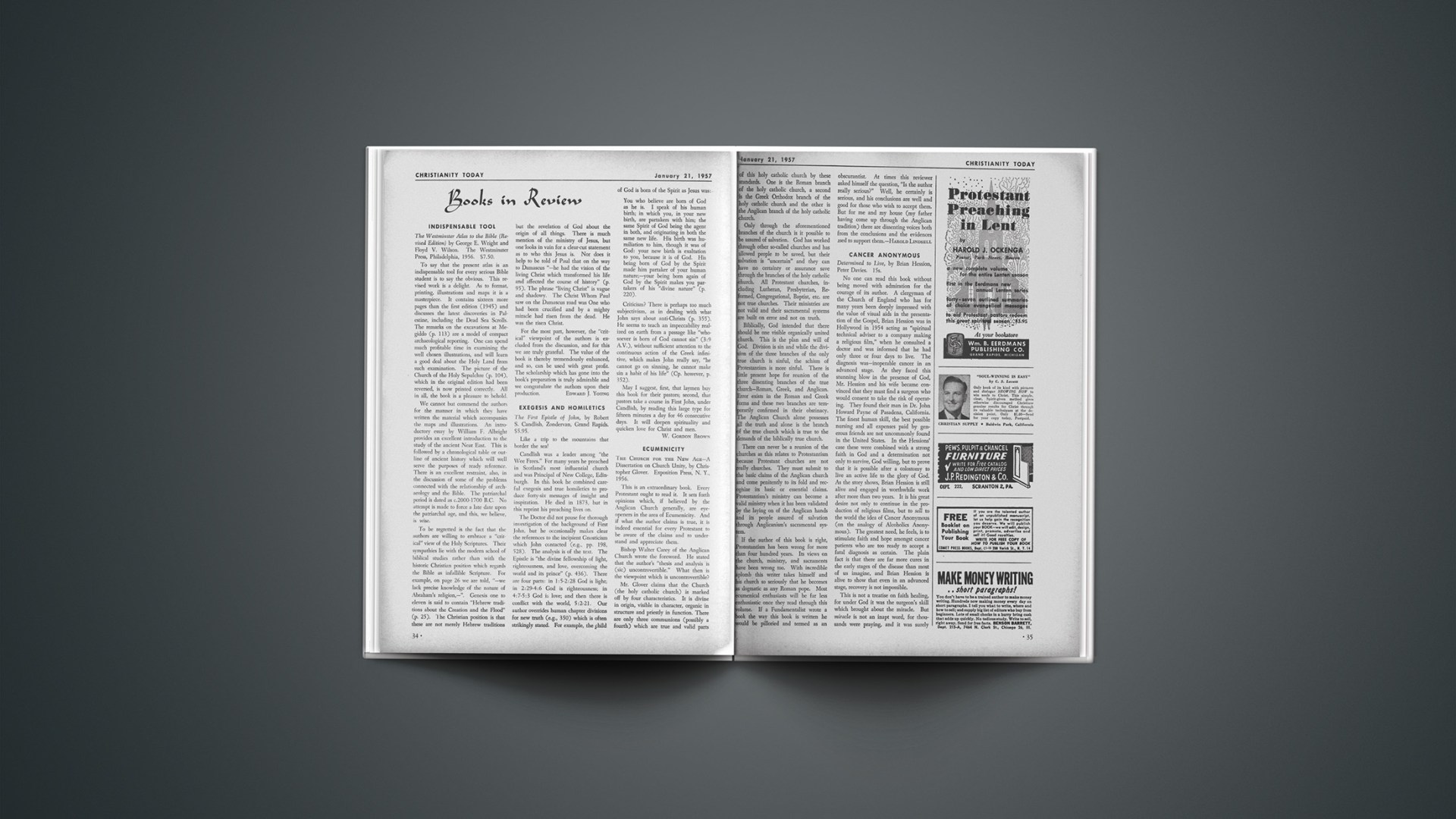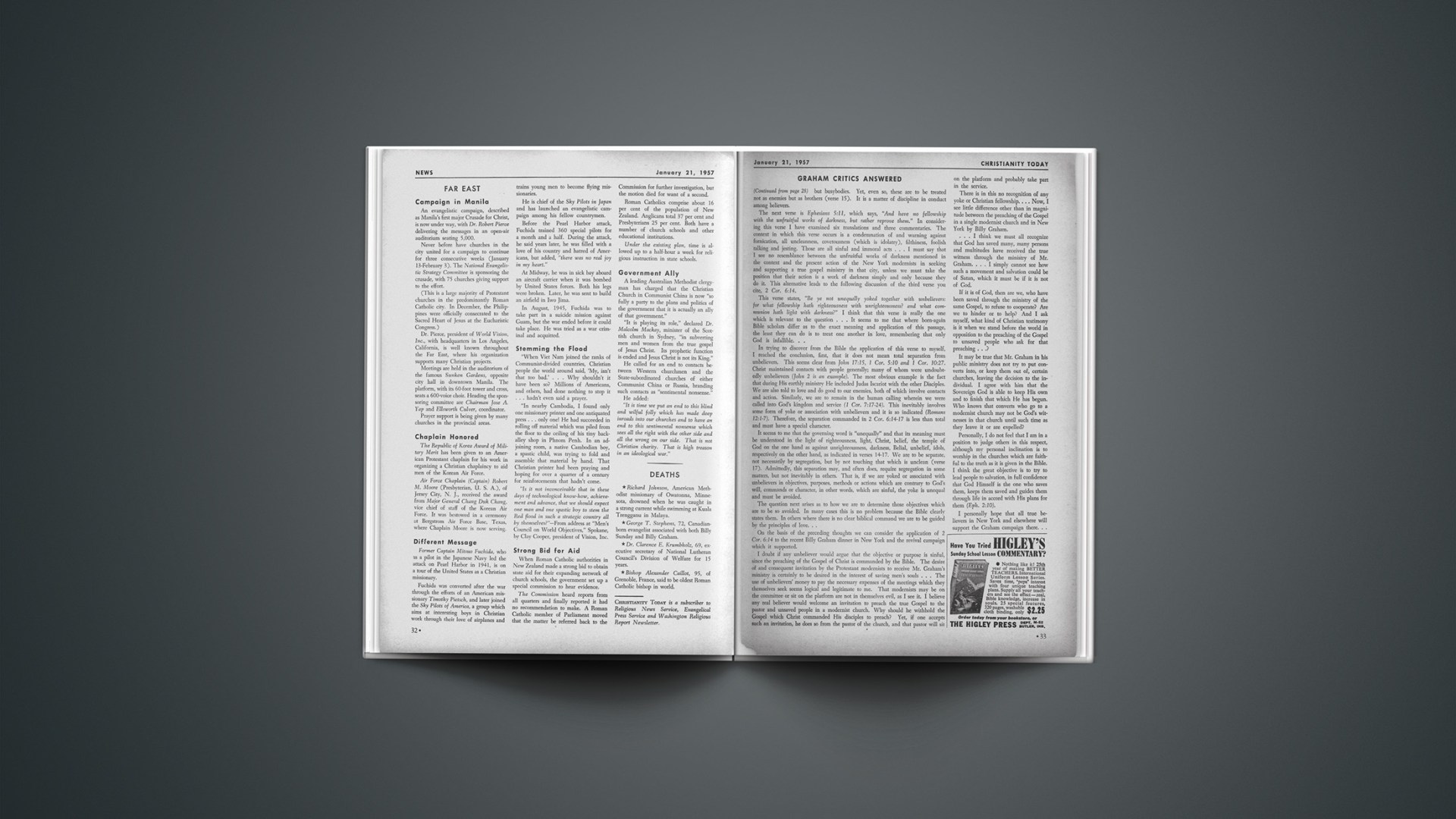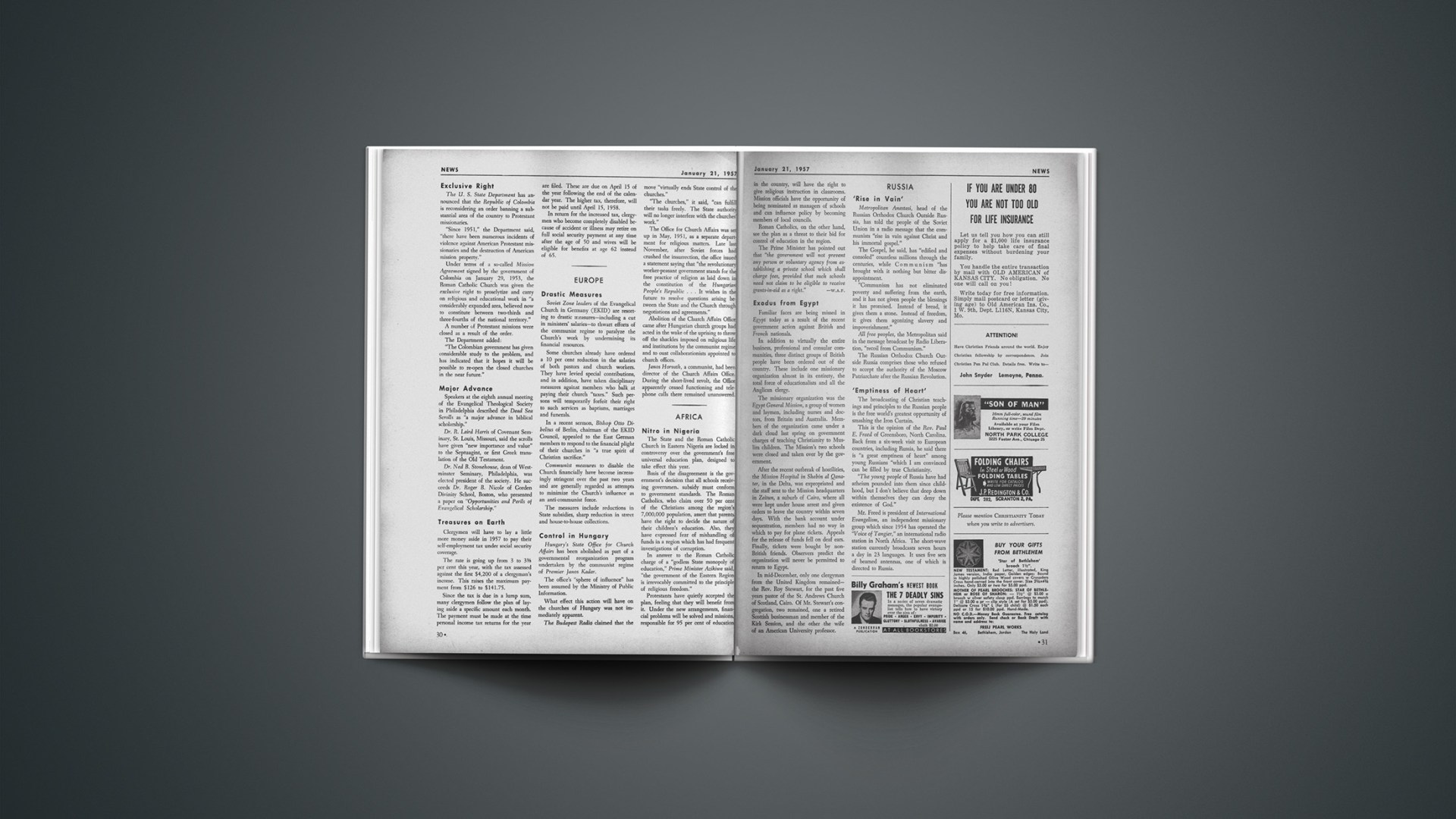That the prophecy of Daniel in many respects is difficult to understand goes without saying. For this reason many preachers do not often use the book in their preaching, and the ordinary Bible reader often throws up his hands in despair as he contemplates it. On the one hand, some advance fanciful interpretions which have obscured the central message of Daniel. And on the other, those scholars who deny the historicity of the book also impose upon it an impossible interpretation and consequently do much to keep it from enjoying the understanding and popularity which it deserves.
Authorship Of The Book
It is necessary to say a word about the question of the book’s authorship. In the early third century there lived a man by the name of Porphyry who was an avowed opponent of Christianity. It was his intention to do all in his power to destroy the Christian religion. He wrote some fifteen books, which bore the general designation “Against the Christians.” Of these, only the twelfth is extant, and that only as it has been preserved in part in the commentary of Jerome on Daniel. According to this early opponent of Christianity, the book of Daniel could not have been written by Daniel because he would not have been able to foretell the future. It was, therefore, written by an unknown Jew who lived in the second century B.C. and who used Daniel’s name. According to Porphyry, this unknown Jew lied. In placing the authorship of the book in the second century B.C., many scholars have followed the unbelieving Porphyry, and it is no exagggeration to assert that this position has become dominant in modern scholarship. It is a position that renders impossible a satisfactory interpretation of the book. One need but examine a modern commentary to discover how untenable are interpretations based on the view that the book of Daniel is a product of the second century B.C.
The traditional Christian view is that the book is the work of Daniel the prophet and was written in the sixth century B.C. This is explicitly taught by the Lord Himself, who spoke of “Daniel the prophet” (cf. Matt. 24:15).
For the Christian believer this infallible utterance of Jesus Christ is sufficient. It is bolstered by the fact that the book of Daniel is a literary unit, so that if one part was written by Daniel, the book in its entirety was also written by him. Furthermore, the arguments against the Danielic authorship are not cogent. They have been answered many times, and there is no need in mentioning them here. If we approach the book as a trustworthy prophecy, we are more likely to look with seriousness upon its message.
Foundation Of Daniel’S Message
The reader will find it helpful to observe the following scheme. In Daniel (both in chapter 2 and chapter 7) there is mention of four world kingdoms, set forth in symbolic fashion. In chapter 2 they appear as parts of a great colossus, whereas in the seventh chapter they are given under the symbolism of four beasts which arise from the sea. The interpretations of these beasts have truly been many, but they may be reduced to the following three basic schemes, here labeled A, B, C.
A word concerning each of these schemes will be in order.
A. This is the position of those who deny that Daniel was the author of the prophecy and who date the prophecy in the second century B. C. In positing a Median kingdom as the second in the series, they assert that the author of Daniel made a gross historical blunder. As a matter of historical fact, it was the combined Medo-Persian kingdom which followed Babylon. The author of Daniel, so the charge runs, did not know this but rather assumed that there was first a Median and then a Median Persian kingdom. The blunder, however, was not on the part of the author of Daniel, for a careful study of the book reveals
that he never envisioned a separate Median kingdom following Babylon nor a separate Persian kingdom following Media. The “critical” view simply will not stand the test of close investigation. The reader may judge a commentary by the identification that it makes of the second kingdom.
B. This view is held by many good Christian scholars, although there are not many commentaries which expound it. It is found in Zockler’s commentary (in the Lange series), also in the old work of Moses Stuart and in the modern Roman Catholic commentary of Cuthbert Lattey, S.J. There are strong objections to it, and, in the writer’s opinion, it will not stand the test of close scrutiny of the text of Daniel.
C. This view may be called the traditional position, which is held and has been held in the church. It is distinctive in that it identifies the fourth kingdom as that of Rome. The fifth or Messianic kingdom was established while the Roman kingdom was in existence (in keeping with the prophecy of Daniel 2:44). This latter interpretation has the most in its favor and is clearly supported by the New Testament. If the reader will keep these three schemes in mind, he will find they aid his understanding of Daniel.
Minor Messages Of The Book
While the central thrust of the prophecy is to show that human empires rise and fall, that it is God who sets up kings and deposes them at his will, and that only the kingdom of Christ can be truly eternal and universal, the prophecy also contains several other messages of great importance. The preacher will find that the character of Daniel himself is an admirable subject for discussion in the pulpit. Although Daniel acknowledged his sinfulness (cf. 9:5), not one sin of his is recorded. Daniel was a statesman who was more concerned to do what was right than to follow a policy of expediency. He lived close to God, constantly having recourse unto him in prayer. He was a man of principle, yet ever maintaining a courteous attitude. There is no greater need either of country or of church than for men like Daniel, who are more eager to do what is right than to win the favor of men, more eager to stand up for truth than to be concerned over results.
The book of Daniel is also a rich treasure house of prayers. Indeed, these would furnish interesting material for a series of sermons or Bible studies. They are filled with adoration of the sovereign God whom Daniel worshipped. And they are filled with expressions of rich thought. We may note just a few of these: “May the name of God be blessed for ever and ever,” “Wisdom and power are his,” “He removes kings and sets up kings,” “He knows what is in the darkness, and light dwells with him,” “Oh! Lord, hear, oh! Lord, forgive, Oh! Lord, attend and do, delay not for thy sake, Oh! my God, for the name is called upon by thy city and thy people.”
Outline Of The Book
The following will serve as a brief analysis of Daniel.
1:1–2:4a Introduction. The triumph of God’s grace in Babylon, and the training of the Hebrew youths.
2:4b–49 The dream of Nebuchadnezzar in which he sees the colossus, and Daniel’s interpretation of that dream.
3:1–5:30 The image erected by Nebuchadnezzar and the majestic appearance of the Son of God in the furnance. The madness of Nebuchadnezzar. Belshazzar’s banquet and his death.
6:1–28 Darius the Mede and the episode of the den of lions.
7:1–28 Daniel’s vision of the four beasts and the interpretation of the vision.
8:1–27 A vision of the ram and the he goat, having to do with the second and third kingdoms.
9:1–27 Daniel’s remarkable prayer and the Messianic prophecy of the seventy sevens. 10:1–12:13 A revelation of the future dealing with the exploits of Antiochus Epiphanes and the Antichrist. Conclusion of the prophecy.
Aids In Study Of Daniel
Much exposition of this prophecy is of almost no value inasmuch as it makes little or no serious effort to come to grips with the difficult problems involved in the study of the book. The best presentation of the “critical” position is found in H. H. Rowley Darius the Mede and the Four World Empires in the Book of Daniel (1935). The older commentary of Moses Stuart gives a good explanation of the Aramaic words and is recommended for the minister who desires help in reading the Aramaic portions found in 2:4b–7:28. The lectures of Edward Pusey, Daniel the Prophet (1891), are superb. The same may be said of the technical studies of Robert Dick Wilson, Studies in the Book of Daniel (Vol. I, 1917, Vol. II, 1938). The comments of Hengstenberg in his Christology of the Old Testament (4 vols.) (1955 reissue) are most helpful. The commentaries of Keil and Leupold are valuable and present an interpretation of the fulfillment of the seventy sevens (Daniel 9:24–27) which is not distinctively Messianic but which takes place largely in the history of the church. The best modern defense of a premillennial position is that of Robert D. Culver, Daniel and the Latter Days (1954), which makes a serious attempt to grapple with some of the problems of interpretations. In The Prophecy of Daniel (1949), the present writer endeavored to defend the historical character of the prophecy and also to present and defend the traditional Messianic interpretation.
Edward J. Young.

